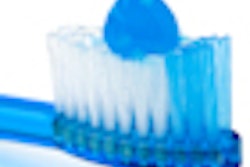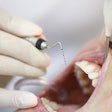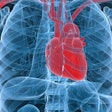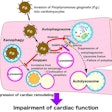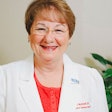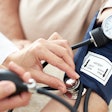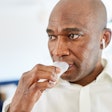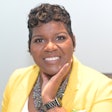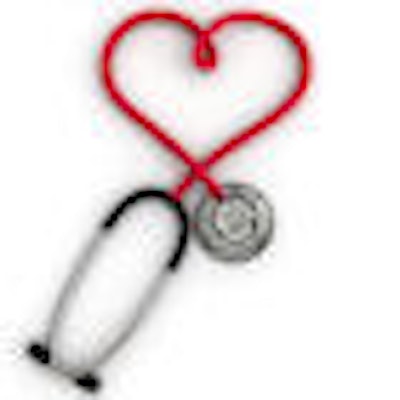
Dentists can play a potentially lifesaving role for some patients by identifying those at risk for fatal heart attacks and referring them to physicians, according to a new study (Journal of the American Dental Association, November 2009, Vol. 140, pp. 1385-1391).
While previous studies have theoretically studied the role of dentists in identifying cardiovascular disease (CVD), this is the first to show that screening for the disease at the dental office actually works, said lead author Michael Glick, D.M.D., a professor of oral medicine at the Arizona School of Dentistry and Oral Health, in a DrBicuspid.com interview.
A 2005 study (JADA, November 2005, Vol. 136, pp. 1541-1546) by Dr. Glick and his colleague Dr. Greenberg found that dentists can play an important role in identifying people in need of primary prevention strategies for CVD. The study used extracted data from the 1999-2000 National Health and Nutrition Examination Survey (NHANES) and the 2001-2002 NHANES. In a 2007 study (JADA, June 2007, Vol. 138, pp. 798-804), Dr. Glick and colleagues went a step further, looking at oral health care professionals (OHCPs) as a resource for identifying patients who were unaware of their increased cardiovascular risk factors.
"OHCPs identified patients with an increased CHD [coronary heart disease] risk who could benefit from primary prevention activities," concluded the study. "A substantial proportion of study patients who were unaware of their risk status were at an increased risk of experiencing a CHD event within 10 years."
HeartScore system
This latest study put this knowledge to a practical test where dentists actually identified patients at risk who were later provided intervention.
Researchers looked at 200 patients -- aged 45 and older -- in private dental practices in Sweden with no history of, or use of medications for, hypertension, hypercholesterolemia, or diabetes. These patients had no visits to a health care professional in 12 months during which glucose levels, total cholesterol levels, or blood pressure had been assessed.
The participating dentists and staff members used a questionnaire to gather information about the patients' weight, height, disease history, medications, smoking habits, physical activity level, and family history of CVD. They also checked the patients’ blood glucose level, total cholesterol, and blood pressure.
The dentists then used a computerized system, HeartScore, to calculate the risk of a patient dying from a cardiovascular event within a 10-year period. Designed by the European Society of Cardiology, HeartScore measures cardiovascular disease risk in persons aged 40-65 by factoring the person's age, sex, total cholesterol level, systolic blood pressure, and smoking status.
Among the study findings:
- Twelve of the patients had HeartScores equal to or exceeding 10% -- in other words, a 10% or higher risk of having a fatal cardiovascular event, such as a stroke or an MI, during the next 10 years
- All 12 of these patients were men
- Eight of these patients were older than 65 years, and five were smokers
- More than 13% of the patients (21 men and six women) had a HeartScore of 5% to 9%
- No woman had a HeartScore higher than 5%
Dentists urged patients with a HeartScore of 10% or higher to seek medical advice.
Of the 12 male patients with HeartScores of 10% or higher, nine sought further evaluation by a medical care provider. Intervention was needed for six of these patients, who were given prescriptions for antihypertensive medications. Physicians for three patients were not able to confirm their risk for cardiovascular disease. Two patients did not follow the dentist's recommendation to seek further medical evaluation, and one was only encouraged by his dentist to stop smoking.
"Oral health care professionals can identify patients who are unaware of their risk of developing serious complications as a result of CVD and who are in need of medical intervention," the authors wrote.
With the increasing data on the link between oral and non-oral diseases, the possibility of chairside screening tests for diseases such as CVD and diabetes mellitus could put dentists and their staff in a key position to enhance the overall health and well-being of their patients, the authors concluded.
Reimbursement a possibility
When you provide such care to your patients, you are sending a message that you care for their overall health, not just their oral health, said Dr. Glick. The actual test is done chair side and takes only minutes to conduct, although the amount time it takes to discuss the results with the patient can vary, he added.
And what are the chances that dentists will be reimbursed for this time?
"If we can show that we can bring down the cost of healthcare, the insurance companies may come around to providing compensation," he added.
He also said that, given the increasing importance of the oral-systemic link, dentists should play a more important role in identifying patients at risk of conditions such as CVD and diabetes. Dentists have the advantage of seeing patients more often than physicians. Around 39% of adults see their physicians in a year while 64% see their dentists which means we see 25% more patients than they do, according to Dr. Glick.
"With conditions like diabetes, it takes a long time before symptoms show up and physicians can detect the disease," he added. "A dentist can help with early detection of a disease even before the patient is aware of the condition."
Copyright © 2009 DrBicuspid.com







